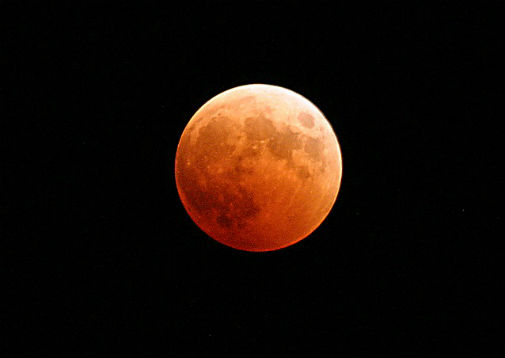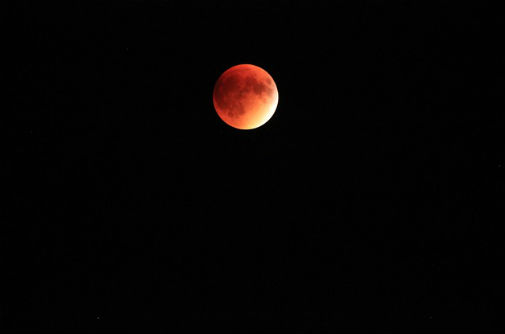Expert Reaction: What to expect from a blood moon
Posted on 26 July 2018

The blood moon is a much anticipated event
Dr Emily Brunsden, Director of the University of York's Astrocampus, said: "In the evening of 27 July we will get the chance to see a micro blood moon.
"This is a total eclipse of the Moon at a time in its orbit when it is close to being the farthest from earth, or at apogee. Hence the Moon is fractionally smaller than usual, a micro moon.
"The eclipse is called a blood moon because as the Moon moves into the shadow of the Earth, the only light that reaches the surface is that which passes through our atmosphere.
Rusty red
"Our atmosphere scatters blue light (making the sky blue) so only the red light passes through and lights up the Moon, making it appear a rusty red colour.
"This eclipse will be the longest of the 21st Century at one hour and 43 minutes, and closest to the longest lunar eclipse possible (about one hour and 47 minutes) giving us a good chance of seeing it even if there are patchy clouds.
"In the UK the Moon will rise already eclipsed from about 8.50pm. The total eclipse will finish at 9.20pm when the Moon is still very low so make sure you have a good view to the South-East horizon.
In action
"After totality finishes, it is nice to watch the moon slowly reappear from a small slither to being full again at 12.30am. This is a fantastic opportunity to see the motion of the solar system in action.
"There is something mystically beautiful and dramatic about being able to see the motion of the Moon in real time. Whilst Lunar eclipse happen one to four times per year, they are only visible to about half the Earth at any one time.
"The next time we will see a full lunar eclipse in the UK will be 2029 so it is worth getting out to see this one - especially whilst the weather is still so nice! Why not try to spot Venus, Jupiter, Saturn and Mars as well. It's a great time to stargaze!"

A lunar eclipse occurs when the Moon passes directly behind Earth
Dr Chris Stewart, visiting science communicator at the University of York's Department of Physics, said: "A full lunar eclipse happens when the moon passes through the Earth’s shadow.
"A lunar eclipse is different to a solar eclipse, where the moon passes between us and the sun. While the solar version is more breathtakingly spectacular, a lunar eclipse is still pretty wonderful, and unlike a solar eclipse, you can view a lunar eclipse completely safely with your own eyes!
Bent sunlight
"The moon will rise above the horizon just after 9pm as a deep red disk, showing that the eclipse is already underway. The hue comes from sunlight bent through the earth’s atmosphere into its shadow, colouring the moon in the same way that sunsets and sunrises are usually red-tinged.
"Around 10:15pm the moon will reach the edge of the Earth’s shadow and begin to emerge from the eclipse, appearing as a bright crescent at first.
"By midnight, the eclipse is completely over and we’re back to an ordinary silvery full moon."
Listen in to Syzygy podcast, which goes live on Thursday, 26 July, for full details about the eclipse with Director of the University of York's Astrocampus, Dr Emily Brunsden.
Explore more news

Bullying significant issue for young people in aftermath of eye cancer, study shows
Thursday 9 May 2024

University of York agrees partnership with U.S company to “revolutionise” MRI tecnology
Wednesday 8 May 2024

Power imbalances and hierarchy prevent doctors from working effectively in teams, new research shows
Wednesday 8 May 2024

Who rules the roost? New research reveals tots play key role in shaping the home environment
Tuesday 7 May 2024

York to co-lead £2.5m project to explore impact of justice system reform and funding cuts
Wednesday 1 May 2024
